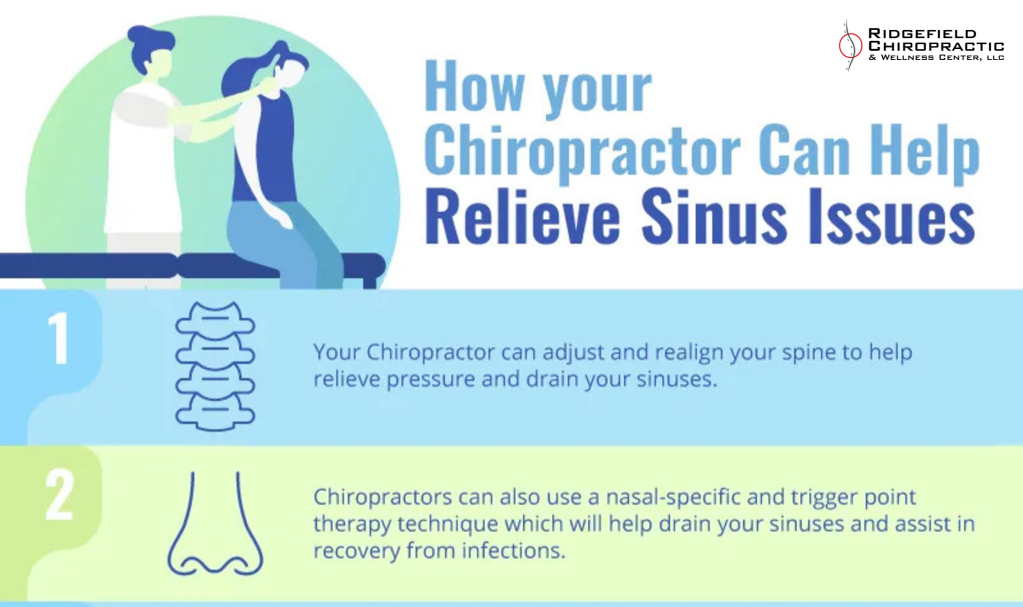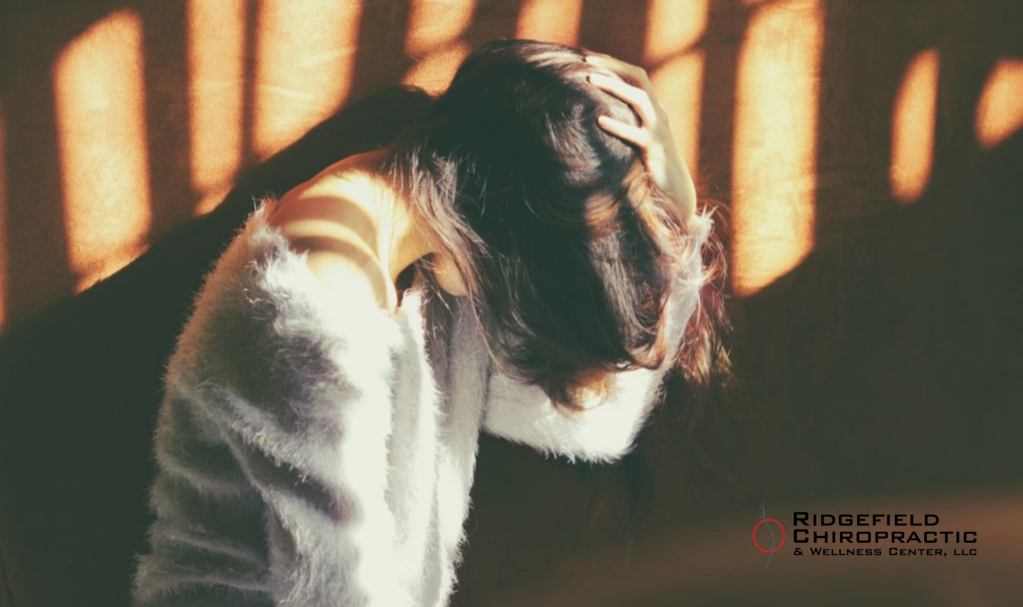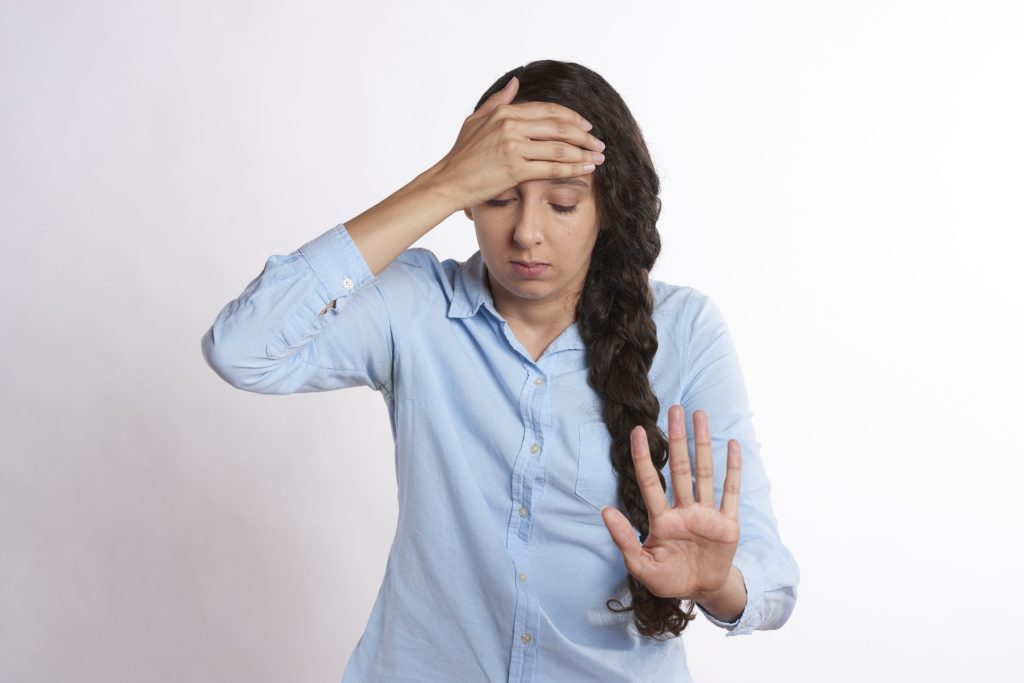Chiropractic Solutions For Headache Relief

Headaches and migraines are pervasive issues affecting millions worldwide. Understanding the types and prevalence is crucial for Chiropractic Solutions For Headache Relief. Chiropractic care emerges as a holistic approach with promising results. Chiropractic Approach Chiropractic care focuses on spinal adjustments to improve nervous system function. Illustrations demonstrate how misalignments (subluxations) are corrected, relieving tension and reducing headaches. Conclusion Ridgefield Chiropractic & Wellness Center emerges as a promising and natural solution for headache management. By addressing underlying causes through spinal adjustments, muscle relaxation, and posture correction, chiropractic techniques offer a holistic approach. Collaboration with healthcare providers and chiropractors ensures personalized care, providing chiropractic solutions for headache relief and long-term prevention of headache intensity.
Effective Chiropractic Management Of Headaches

Introduction Headaches and migraines are common neurological conditions that can significantly impact a person’s quality of life. Chiropractic care is recognized as a potential alternative or complementary approach for managing these conditions. In this article, we will delve into the effectiveness of chiropractic management in relieving headaches and migraines, exploring the underlying principles, techniques, and benefits. Understanding Headaches And Migraines Differentiating Headaches And Migraines Headaches and migraines are often used interchangeably, but they are distinct conditions. Headaches are characterized by head, scalp, or neck pain and can range from mild to severe. Conversely, migraines are more intense and are accompanied by additional symptoms such as nausea, sensitivity to light and sound, and visual disturbances. The Impact Of Headaches And Migraines Both headaches and migraines can disrupt daily activities, making it challenging for individuals to work, socialize, and enjoy life. The quest for effective management strategies has led many to explore chiropractic care as a potential solution. Chiropractic Approach To Managing Headaches And Migraines The Role Of The Spine In Headaches Chiropractors operate under the principle that the spine plays a crucial role in overall health. Misalignments or subluxations in the spine can affect the nervous system’s function, potentially contributing to headaches and migraines. By realigning the spine, chiropractors aim to alleviate these conditions. Chiropractic Techniques For Headache Relief Spinal Adjustments: One of the hallmark techniques employed by chiropractors is spinal adjustments. These manual manipulations involve precisely applying controlled force to spinal joints that have deviated from their optimal alignment. These misalignments, also known as subluxations, can impede the proper functioning of the nervous system, potentially leading to headaches and other discomforts. By carefully realigning the spinal vertebrae, chiropractors aim to restore normal nerve function, alleviate nerve interference, and alleviate headache triggers. Muscle Relaxation: Tension in the neck and shoulder muscles can significantly contribute to the onset and persistence of headaches. Chiropractors employ muscle relaxation techniques to target these tense muscles and promote relaxation. This can involve various methods such as massage, stretching, and gentle pressure application. Through these techniques, blood circulation is improved, and muscle tension is reduced. By relieving these areas’ physical stress and strain, chiropractors can effectively mitigate headache symptoms and contribute to overall relaxation and well-being. Posture Correction: Poor posture is a typical modern-day concern, and it’s often linked to various health issues, including headaches. Chiropractors recognize that improper posture can place undue stress on the spine, muscles, and nerves, potentially leading to headaches. As part of the H4 approach, chiropractors thoroughly assess a patient’s posture and identify deviations from the optimal alignment. They then work to correct these posture issues through personalized treatment plans. By addressing poor posture, chiropractors help reduce the likelihood of headaches and promote better spinal health and overall body function. Benefits Of Chiropractic Management Of Headaches Chiropractic care offers several benefits for individuals seeking natural headache relief: Non-Invasive Approach: Chiropractic care provides a non-invasive alternative for individuals seeking relief from headaches. Unlike surgical procedures or medications that can have potential side effects, chiropractic adjustments involve manual manipulation of the spine and other joints to improve alignment and alleviate headache-related tension. This approach is generally well-tolerated and doesn’t involve any incisions or the use of drugs. Holistic Assessment: Chiropractors take a holistic approach to headache management. They consider the entire body’s functionality and its interconnections. Rather than just focusing on treating the symptoms of headaches, chiropractors seek to identify the root causes that might be contributing to the headaches. This could involve assessing posture, spinal alignment, muscle tension, and lifestyle factors that may trigger or exacerbate headaches. Individualized Treatment Plans: Chiropractic treatment plans are highly personalized. Chiropractors understand that each person’s experience with headaches is unique, and the underlying causes can vary. This individualized approach involves thoroughly assessing the patient’s medical history, physical examination, and any necessary diagnostic tests. The resulting treatment plan may include a combination of chiropractic adjustments, spinal manipulations, soft tissue therapies, exercises, and lifestyle recommendations tailored to the patient’s specific needs. Comprehensive Care: Chiropractic care offers comprehensive headache management. Chiropractors address the immediate symptoms of headaches and aim to prevent their recurrence. By addressing the underlying issues contributing to the headaches, such as poor spinal alignment, muscle tension, or nerve irritation, chiropractors work to create long-term relief and improve overall well-being. Natural And Drug-Free Solution: Chiropractic care aligns with the preference for natural and drug-free solutions for headache relief. Many individuals prefer to avoid the potential side effects and dependency associated with medications. Chiropractic care offers a drug-free alternative that enhances the body’s innate ability to heal itself through proper spinal alignment and nervous system function. Collaborative Care: Chiropractors often work in collaboration with other healthcare professionals. They can refer patients to other specialists for further evaluation or complementary therapies if necessary. This collaborative approach ensures that patients receive well-rounded care addressing all health and well-being aspects. Scientific Evidence And Considerations Research Supporting Chiropractic Care Several studies suggest that chiropractic care can effectively reduce the frequency and intensity of headaches and migraines. However, more research is needed to establish its long-term benefits and mechanisms of action. Consultation And Collaboration Individuals should consult their healthcare providers before seeking Chiropractic management of headaches management. Chiropractors often collaborate with medical doctors to ensure a well-rounded approach to patient care. Conclusion Ridgefield Chiropractic & Wellness Center offers a promising avenue for individuals seeking natural and holistic solutions to manage headaches and migraines. Chiropractors aim to address underlying issues contributing to these conditions through spinal adjustments, muscle relaxation techniques, and posture correction. While more research is needed, the evidence suggests that chiropractic care can provide meaningful relief for many individuals. If you’re considering Chiropractic Management Of Headaches, consult your healthcare provider and collaborate with your chosen chiropractor to ensure comprehensive and personalized care.
Get Your Good Sleep

3 Habits That’ll Get You Good Sleep

Sick of tossing and turning at night? Getting quality sleep is essential for one’s overall health and well-being. But sometimes, work, stress and poor lifestyle habits get in the way. Studies show that poor sleep induces long-term effects on health. These include memory issues, weight gain and high blood pressure. That said, quality sleep should always be a part of your everyday life. We’ve tackled 3 important sleep habits you should practice so you can wake up well-rested and energized for the day. Mind what you eat and drink You may already be aware that cutting back on caffeine may help you fall asleep faster at night–but that alone isn’t enough. Eating a rich amount of vegetables, fruit, and healthy fats will also help you sleep longer. In addition, you might want to limit your carb intake for dinner meals. Food like white bread, rice and pasta may keep you up longer at night. Understand your circadian rhythm Ever heard of ‘circadian rhythm’? It basically tells your body when to stay awake and when it’s time to sleep. Research indicates that increased exposure to natural daylight is linked to improved circadian rhythm. So don’t hesitate to get out in the sun once in a while. On the other hand, blue light coming from smartphones and computers does the opposite. Blue light reduces your melatonin levels, which is a hormone that promotes healthy sleep. If you want to sleep better, reduce your screen time before bedtime. Relax and clear your head Take time to wind down after a long day. Relaxation methods such as mindful meditation, yoga, and controlled breathing may help lull you to sleep. To fall asleep faster, we suggest eliminating noise around your bed. Earplugs can be an option if you can’t drown out nearby noise sources. In addition, natural scents like lavender may promote relaxation and calmness. . All that said, know when to see a chiropractor! If lack of sleep persistently hampers your day-to-day life, it might be time to visit your doctor. It never hurts to rule out a condition that may be the source of your sleepless nights.
How Your Chiropractor Can Help Relieve Sinus Issues

Sinus issues are no fun, depending on what area you live in and your allergies a lot of sinus sufferers go a decent part of the year dealing with sinus headaches, constant runny noses, and a constant stream of medicine. The great part is that you have options, great natural options to help with those sinus issues. Seeing a Chiropractor, getting a massage, and using essential oils can really help sinus sufferers! There is good news for sinus sufferers, you can feel better and start to enjoy being outside during allergy season again! Don’t let your sinus problems control your life, call your Chiropractor today!
6 Ways Chiropractic Care can Help Reduce Headaches

In the U.S. and across the world, headaches after one of the most common chronic disorders people face. According to the World Health Organization (WHO), almost 50% of the adult population has experienced a headache at least once within the past year. Additionally, 9 out of 10 Americans suffer from headaches at some point in their lives. Furthermore, headache disorders, which are categorized as recurrent, severe bouts of headache pain, can cause disability, decreased quality of life, financial difficulty, and even an inability to work. If you’re a headache sufferer, you know exactly how debilitating a bad headache can be. Whether you get migraines or routine headaches, you’ve probably wondered time and time again how to stop theme, and what you need to do to reclaim your quality of life. Luckily, the answer may be more straightforward than you’d imagine: Chiropractic care. Chiropractic care addresses the root cause of many headache disorders, promoting healthy alignment in the spine, and ensuring comfort down the road. Here’s what you need to know. What Causes Headaches? Headaches, like joint pain or allergies, have dozens of causes. Because of this, the root issue underlying a problem can be quite tricky to pin down. Common headache triggers include the following: Food allergies Environmental stimuli, such as noise, lights, or stress Behaviors (including insomnia, low blood sugar, excessive exercise, nail-biting, etc.) Physical problems (including neck injuries, spinal misalignment, or strains) Tension Joint irritation Teeth grinding If you already know what triggers your headache, you’ve got a great place to start. If you don’t, you may have to do some investigative work to determine the cause. Consider keeping a headache journal detailing what you were doing or eating before your headache began. Over time, you’ll be able to identify patterns that expose the root causes of your headaches. Chiropractic Care and Headaches If you suffer from headaches, chiropractic care could be an excellent option for getting some relief. According to the American Chiropractic Association (ACA), “Research shows that spinal manipulation – one of the primary treatments provided by doctors of chiropractic – may be an effective treatment option for tension headaches and headaches that originate in the neck. A 2014 report in the Journal of Manipulative and Physiological Therapeutics (JMPT) found that interventions commonly used in chiropractic care improved outcomes for the treatment of acute and chronic neck pain and increased benefit was shown in several instances where a multimodal approach to neck pain had been used. Also, a 2011 JMPT study found that chiropractic care, including spinal manipulation, improves migraine and cervicogenic headaches.” Since the vast majority of headaches are caused by muscle tension or spinal misalignment, chiropractic care is an excellent treatment approach. In addition to addressing the hazards of our sedentary lifestyle, chiropractic care also reduce joint irritation and muscle tension, leading to fewer headache days in a given month. 6 Ways Chiropractors Address Headache Pain If you’re suffering from recurrent headaches, you need relief. Fortunately, chiropractors are familiar with these particular difficulties and will go above and beyond to ensure you get the career you need. Here are six ways your chiropractor may approach and treat your headaches: Perform spinal manipulations and ongoing chiropractic adjustments. These manipulations and adjustments seek to resolve stress in the system, improve the function of the spine, and restore movement and mobility to your neck, upper back, and shoulders. Provide nutritional advice. In some cases, recurrent headaches are a sign that your body is getting too much of something or not enough of something else. In these cases, your chiropractor may recommend a change in your diet, or the addition of supplements, like B vitamins or Iron. Your chiropractor may also consider your hydration, as this is a critical factor in headache prevention. According to the ACA, people who drink at least eight 9-ounce glasses of water each day will avoid dehydration and be much less prone to headaches in the future. Offer advice on posture. Postural problems are a significant underlying cause for many headaches. If you fit into this category, your chiropractor will likely correct your daily ergonomics (work postures), and recommend a variety of exercises and relaxation techniques meant to improve strength and posture. Recommend complementary therapies. These therapies will work alongside your chiropractic adjustments. They may include heat therapy, acupuncture, and massage. Perform x-rays. X-rays are advanced images and will rule out fractures, injuries, or other causes that could be underlying your headache pain. Perform deep neck flexor exercises. These exercises seek to actively move your joints and muscles in controlled and guided ways. This restores mobility and decreases tension. Of course, no two headache disorders are precisely the same. This may mean your chiropractor will take more or fewer approaches to treat your unique pain, depending on the underlying cause and the circumstances surrounding your headaches. No matter what the case may be, it’s essential to work with your chiropractor to come up with a treatment plan that suits your condition and your life. Kick Your Headaches to the Curb Headaches are uncomfortable, unpleasant, and an interruption to your daily life. Fortunately, you don’t have to live with them. Instead of suffering through yet another headache this year, book an appointment with a chiropractor today. A chiropractor can help you identify the root cause of your headaches and come p with a treatment plan to address them. Within a few months of chiropractic care, most patients see a dramatic decrease in the frequency and severity of their headaches. Could you be one of them? Contact our office to book your first appointment today!
6 Concussion Recovery Tips

Concussions are not enjoyable and can cause issues long after they are gone, it is very important that after a concussion a proper recovery is followed. A proper recovery can take time and seem frustrating, the only way to lessen the effects and long lasting repercussions is having a proper recovery, there are some great ways to help you feel better and recover faster. Concussions can be scary and cause lasting side effects, they do not have to keep you down long. Recovery can be difficult and the symptoms can be frustrating, however; if you follow our suggestions you will be on your way to feeling better in no time!
4 Ways to Relieve Migraine Tension at Work

The onset signs are impossible to ignore: throbbing pain in your head, a sudden feeling that working your job is impossible, sensitivity to light, nausea. Even if you haven’t tipped into a full-blown migraine yet, you know that one is coming. You have a single choice – relieve the tension now or feel terrible all day long. Which one do you choose? If you’re like the 38 million other Americans who suffer from migraines, you probably want to relieve the tension as quickly as possible. The question, then, is how? Battling migraines can be notoriously difficult, and finding actionable ways to relieve migraine tension is critical to long-term wellness and comfort. Fortunately, it is possible. Here’s what you need to know. Migraines, by the Numbers Right now, experts estimate that about 13% of the U.S. population suffers from migraines. About 2-3 million of those migraine sufferers are chronic. As if that weren’t enough, roughly 5 million people in the U.S. experience at least a single migraine each month, and more than 11 million people say their migraines cause moderate to severe disability. Here’s are some additional migraine statistics to be aware of: 18% of women and 6% of men suffer from migraines Migraines occur most often in people between the ages of 35-55 and are most common in caucasians 91% of people who suffer migraines say their condition causes them to miss work or not be able to function normally during bouts of migraine tension About 70% of people who suffer from migraines have a family history of the condition 69% of migraine sufferers have sought treatment for their migraine tension 63% of migraine sufferers have at least a single migraine monthly 24% of people with migraines have gone to the E.R. because the pain of the migraine was so severe One study estimates migraine-caused loss of productivity in the U.S. is about $5.6 billion to $17.2 billion per year because of missed work Migraines cause 36 million days of bed rest and 21.5 million days of restricted activity for workers annually Relieving Migraine Tension at Work: 4 Tips to Cope If you are struck by a migraine when you’re at work, here are a few tips to help you navigate the situation without going crazy in the process: 1. Consider Telling Someone Having a migraine can make you feel very vulnerable. Despite this, you may want to tell someone anyway. The reason for this is simple: sharing the truth about your situation allows other people to help you. Tell your boss or supervisor that you have a condition that causes migraines and that you’re working with your healthcare provider to resolve it as best you can. In many cases, a boss or supervisor that knows the truth will be able to help you maintain productivity and comfort throughout the day, rather than wondering why you’re wearing sunglasses in the office or missing the morning meeting. While you certainly don’t have to tell your entire team that you suffer from migraines confiding in a trusted person or two is a great way to equip yourself with an ally and ensure you get the care and space you need as you cope with migraine tension. 2. Take Your Meds If you feel a migraine coming on, the key is to act as quickly as you can. Take your medication immediately, drink some caffeine, and do your best to avoid light, sound, and other stimulants. If you take an OTC medication like ibuprofen or acetaminophen, be sure to keep an extra stock of it in your desk. You may also want to keep some in on-the-go places, like your purse or car. Be sure that you also have ice on hand (keep some in the freezer at work), since applying a cold pack on your forehead or the nape of your neck can go a long way toward easing migraine pain. From there, do everything you can to limit your migraine experience until it goes away. If you can stay in your office, dim the lights, and avoid conversation, that’s best. If not, you may refer back to point #1, inform your boss, and ask if you can take a break until the tension diminishes. 3. Avoid Triggers One of the best ways to avoid migraines (and to encourage them to ebb off when they do happen) is to avoid migraine triggers. Migraines happen when the body reacts to “triggers,” either internal or external. These triggers cause your brain to release chemicals that irritate or inflame the blood vessels in the brain. This, in turn, causes pain and discomfort. While it’s generally impossible to avoid all triggers, you can limit them as well as possible. By modifying your lifestyle and interaction in the office, you can do your best to stop migraines before they start. If you do get a migraine, avoiding triggers can help prevent it from getting worse and make the duration much shorter. 4. Eat Healthy Meals Working straight through lunch or just grabbing a burrito on your way to the office can bring on a migraine. Instead of depriving yourself of food, take regular food breaks and focus on drinking plenty of water. Don’t forget that dehydration is a migraine trigger, and that it’s essential to keep a bottle of water at your desk to keep yourself happy and comfortable throughout the day. For best results, be sure to eat a nutritious, protein-packed breakfast before you go to work, such as eggs or yogurt. This will help fuel your body throughout the day and make it possible for you to avoid migraines all day. To take this a step further, be sure you’re staying comfortable throughout the day. Your desk, chair, and phone should all be ergonomic and designed to fit your face and body. If anything is off-kilter or requires you to throw off your alignment to reach it, resolve the situation immediately. After all, being on the phone all day long is tough enough on
Acupressure for Migraines & Headaches – Ridgefieldchiropractic

Did you know that more than 38 million people currently suffer from migraines? That’s about 13% of adults in the U.S. With so many people contending with migraines on a regular basis, you might be surprised to realize that there are very few natural remedies to treat these searing headaches. Except, that is, for accupressure. What is Acupressure? Acupressure is a technique that’s similar to acupuncture, except that it uses finger pressure rather than fine needles at specific meridians throughout the body. This pressure is meant to disperse the flow of energy to treat pain and chronic conditions. Call us today to schedule your appointment!
